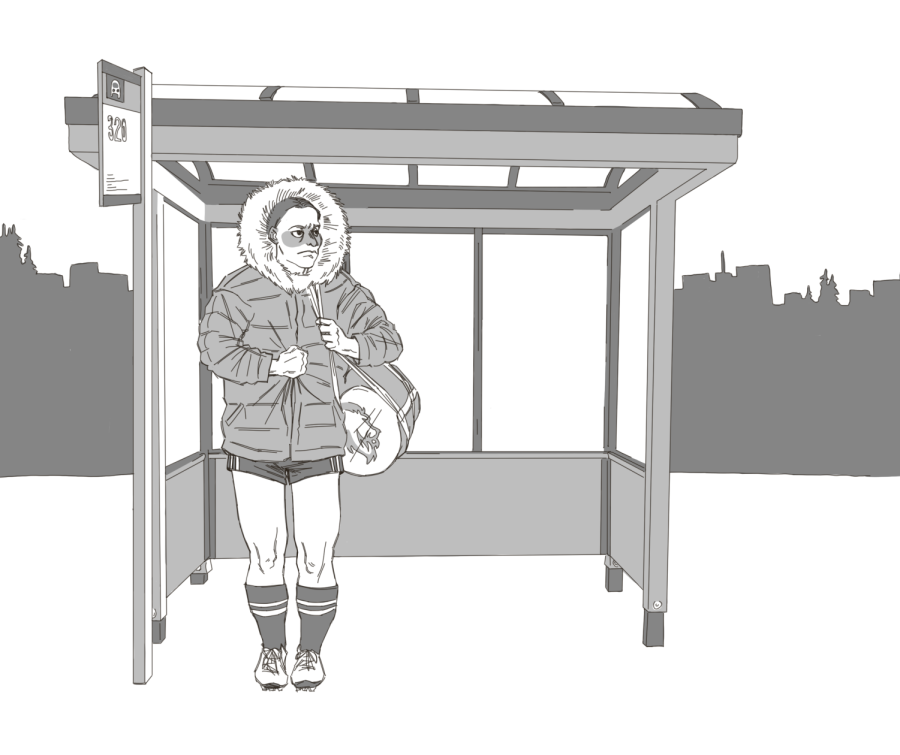Metro Buses Desperately Needed Northside
You’ve just been accepted to Lakeside School! Congratulations! But there’s a problem: you’re not sure if you can even go. There are no bus stops within 20 minutes, and both of your parents have to get to work every weekday. You and your family are left with a choice: do you enroll and entangle you and your family in the web of transportation, timing, and scheduling issues that will inevitably arise, or do you turn down the opportunity to go to Lakeside?
This situation is emblematic of the glaring issue which the bus system still faces: stop distribution. There are service holes throughout much of the Seattle Metro area — places where there does not exist a bus stop in the morning or afternoon. In particular, the regular morning and afternoon metro buses have no stops north of Lakeside (other than The Evergreen School) on the Westside and none north of Kirkland on the Eastside.
The lack of bus stops in certain areas often has negative ramifications for affected students and their families. For many living north of Lakeside, a lack of stops translates to less sleep, more delays, and significant concessions required for their parents. Lucas B. ’25 expressed that the lack of buses is “extremely frustrating,” as his parents have to drive him 35-45 minutes each way. He adds that their family only has one car, so his parents “have to meticulously plan their day out.” As a result, Lucas sometimes waits until 5:00 or 6:00 pm, which is especially difficult on Fridays, when the library closes at 4:00. He mentions that this “makes doing homework more difficult and means I have less time with my family.”
“And then,” he says, “there’s the mornings when the weather is bad, and the traffic is worse. On days with pouring rain, it’s a miracle if I get to school on time. Of course, this means I sometimes miss class, and have to make it up later.” Lucas isn’t the only one who faces these problems; “there’s at least 15 Lakesiders that I know of that live in the north and who all have the same problems as me,” he says. “I feel like Lakeside needs to provide for all students better, not just those who live in Seattle or the Eastside.”
On the other hand, there are those like Betsmona A. ’25 who don’t mind the lack of buses during the morning: “For me in particular, it’s not an issue in the mornings because my dad has to go this direction for work, and he drops me off at Lakeside around eight o’clock anyway. But in the afternoons, I can be stuck after school until six or even later. And for my dad, it would be way easier to go home rather than wait in Seattle for three hours.” Betsmona’s “one-way” travel issues are more common than the “both-way” issues of Lucas because many parents drop off their kids in the morning while going to work. However, since work usually ends two hours after school, students are often stranded on campus in the evenings.
With that noted, however, Lucas’ experience suggests that the lack of northern buses is a silent problem, not only at Lakeside but also at Evergreen and University Prep, since his comments and population data, when extrapolated to the total student population of the three schools, suggest that there are a minimum of dozens of students in the north facing transportation shortfalls. (After all, the Northside accounts for a quarter of the Seattle Metro’s population).
For context, about 90 students registered for the bus routes servicing the most students, the 988 and the 987, last year, meaning that the mass of students in the north is plenty to warrant a bus route. Furthermore, circling back to the introduction, there are bound to be some students in the north who Lakeside accepted but could not go here because of a lack of transportation.
When the students of Lakeside were polled on whether they would support bus routes in the north, an overwhelming majority, 88%, were in favor of the idea. To further this side of the argument, Lakeside cut two of routes that existed prior to the COVID pandemic — the 994 and the 980 (who served the Central District and Laurelhurst respectively), meaning that the school and its partners certainly have the capacity for more bus routes.
No one is seriously advocating routes that visit every corner of the north, but there should certainly be some that run along major materials like I-5, I-405, or SR-522 in order to “serve the largest amount of families in the shortest amount of time” (a principle pulled verbatim from Lakeside’s own website). Lucas D. ’25 noted that the bulk of his commute consists of sitting in I-5 South’s morning traffic, while reaching the highway is not much of a problem.
One possibility for an additional bus route would be a bus that, in the afternoons, starts Lakeside and travels north along I-5, stopping at 175th, SR-104, Alderwood Plaza, SR-96, SR-526, and finally, US-2. In the mornings, it could go in the opposite direction. Lakeside and its partners could also consider a route tending eastwards serving Lake Forest Park, Bothell, and Woodinville.
The business office has certainly made strides in improving bus routes since their reintroduction last year, but there is always room for improvement — and this year, the focus, from students, is on expanding coverage to everyone who needs it.
The business office did not reply to two requests for comment.
Ever since his little incident in April 26, 1986, Rohan Dhillon has been on the run from a variety of governmental agencies and human rights organizations—...

